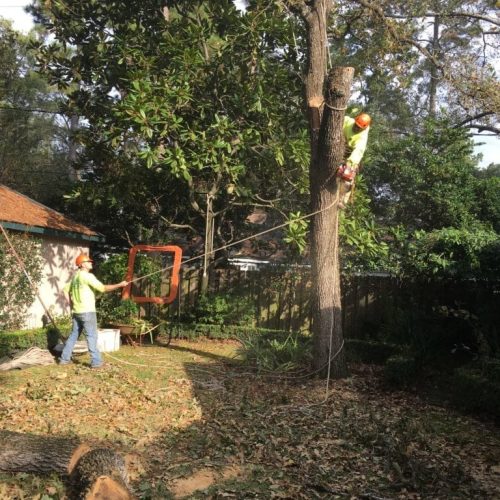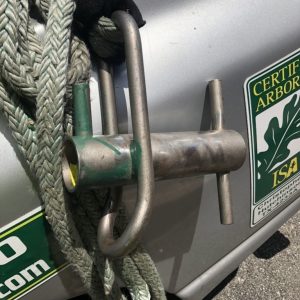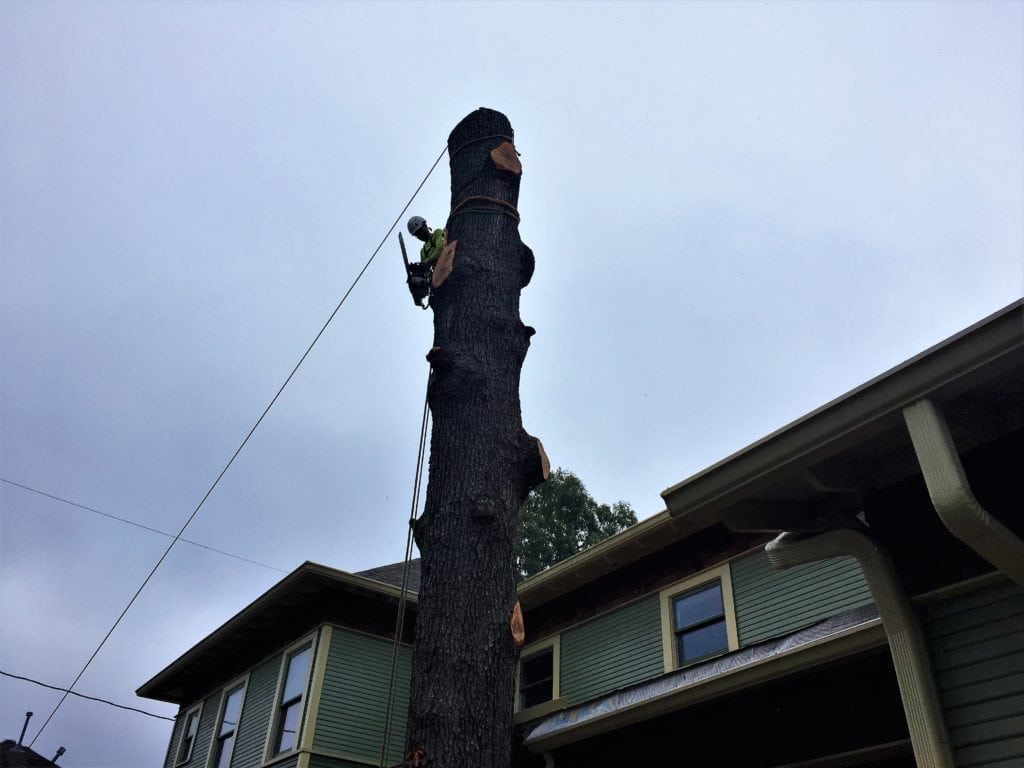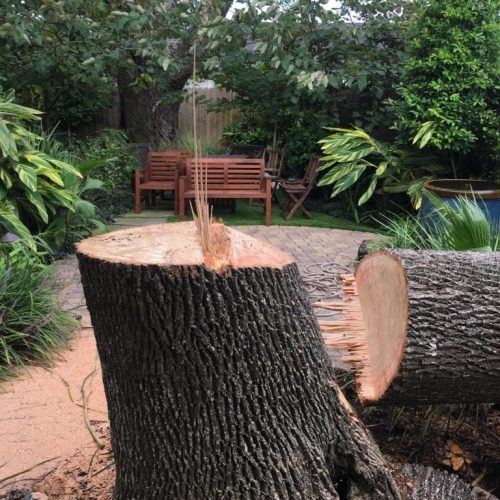Tree Removal Methods
There are several different tree removal methods. One method may be best for a tree over houses, while another is best suited for a tree in an open field. Factors such as available space to lower debris, surrounding structures and objects, and the tree’s current health and size are all considered when determining which method to utilize.

Rigging
Tree removal methods include rigging when free-falling is not possible. Rigging is the use of ropes and other equipment to take down trees or remove limbs. This technique often allows for removal of larger limbs in less time and with more control. Only experienced climbers should attempt to use rigging techniques, as it is an advanced aspect of working in a tree. Tools can vary based on the situation. The basic form of rigging for tree removal involves ropes, wraps on the tree’s trunk, and natural crotches used as rigging points. More advanced forms require an understanding of other equipment involved. As always safety is key, ensure that the climber is experienced and knowledgeable before any rigging is attempted.

Rigging Equipment

Fiction is a huge tool relied on by arborist to help control loads being lowered out of a tree. For ages the tree itself would assist in providing friction, by wrapping the rigging line around the trunk. However, friction devices now have been designed specifically for tree removal methods. The demands placed on these devices by dynamic loading mean tools from other industries are not always applicable. It is important to choose the appropriate equipment for a given situation to make the job more productive and safer. Examples of friction devices include several designs of bollards. Some bollard-type lowering devices are designed with mechanical advantages. A clear understanding of the science behind these devices are key to utilizing them safely and efficiently.
Fundamental Rigging Techniques
There is always more than one way to get wood and brush from a tree to the ground. The best tree removal methods are the ones that maximize productivity while still maintaining safety. An investment in the proper equipment, and education into understanding the equipment can pay off big time. Numerous choices need to be made during the rigging process. Should you run the ropes through natural crotches or a block? How will you reduce friction at the rigging point? Which knot is appropriate to use as a tie off? After a branch is cut is there an appropriate method to control the swing, ensuring climber and surrounding property safety? Does tip-tying, butt-tying, or a balanced tie need to accompany the tag line? These are all questions an experienced and educated arborist should be able to appropriately answer given the tree being remove and its surroundings.

Tree Felling

Many times the situation and circumstances which call for tree removal require rigging techniques to be used. Other times, trees can be felled using wedges or a tag line for added control. Tree removal methods all require careful calculations, however tree felling is the most dynamic. All site and tree condition factors must be taking into consideration. Including surrounding obstacles and terrain; wind direction and magnitude; and the shape, flaws, and lean of the tree. All workers involved in the removal must maintain safe distances, have a clear means of communication with the feller, and know the retreat path. The chain saw operator must have a stable stance, control of the saw, and freedom of movement for retreat. Felling notches and back cuts must be calculated correctly as well. The hinge is critical in controlling the direction of fall. If the hinge is the proper thickness, then the wood fibers should break when the face notch closes.
